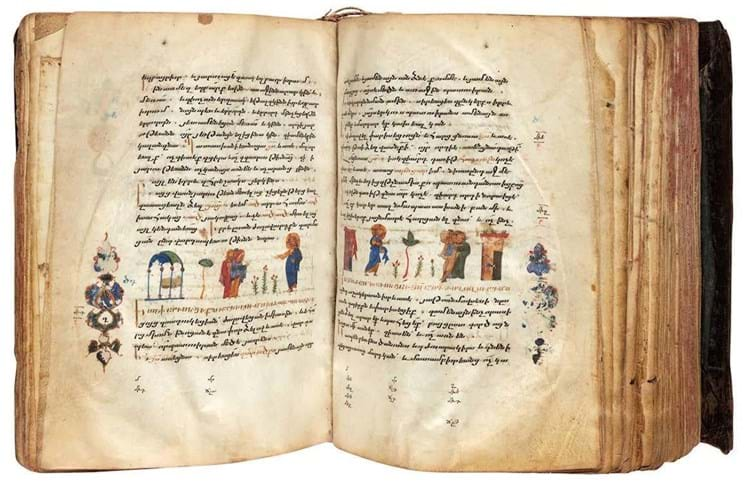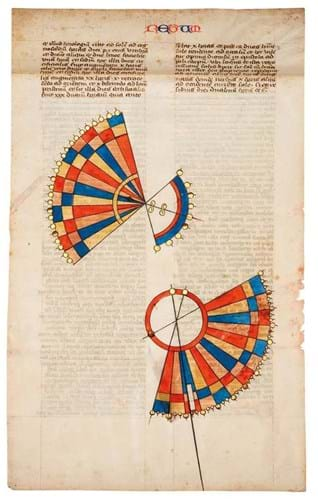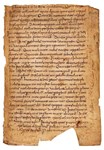Estimated to be worth as much as £10,000, an early and somewhat time-worn Armenian manuscript provided a big surprise in a London auction when bidding reached £300,000.
Part of a Sotheby’s (26/20/13.9% buyer’s premium) sale on June 15 and dated to “1422, perhaps earlier and later”, it was a Gospels manuscript on vellum accomplished in several different hands.
It features three portraits of the evangelists (lacking Luke) and decorative headpieces at the head of each Gospel, along with some zoomorphic initials and unusual frieze-style illustrations.
The St Matthew gospel incorporates complete coloured illustrations, while those for Mark and the start of Luke contain outline sketches only, or indeed gaps where illustrations should be.
The binding of blind-tooled polished calf over thin wooden boards has three metal pieces nailed to the upper cover in the form of a stepped cross, while on the lower cover a simple rectangle represents Christ’s tomb.
The main colophon is missing, but two others have been added – one of 1433 and another by a Father Basil concerning the replacement of missing tables of contents and the preface to the Gospel of John. The latter, said Sotheby’s, could actually be earlier, as the name Basil is rarely found in Armenia after the 14th century.
Sundial direction
Of similar age was a single French manuscript leaf of c.1360-80 featuring biblical references to the sundial of King Ahaz, among the oldest recorded for any form of clock. Illustrated with two very large diagrams of sundials, it sold at £48,000.
The text relates how Ahaz (or Ezechias), sick and near to death, was told by God, via Isaiah, that he would be granted another 15 years. As a sign that his prayers had been heard, the shadow of his sundial would go backward – the implication being that the sun, at God’s command, had temporarily reversed its direction across the sky before resuming a normal course.
Earliest example
The sale’s most expensive printed book, at £140,000, was a 1532, second edition of Machiavelli’s Il Principe… in an 18th century Danish binding.
The earliest example of printing in the sale, however, was a single leaf from the press of a Dutch proto-typographer that was found, along with two 14th/15th manuscript leaves, being used as binder’s waste in a 1536-40 volume of the Homilaries of Johannes Eck.
Dating from c.1465-80, that early printed leaf was a table of contents for an edition of the works of Ludovicus de Pontanus.
















